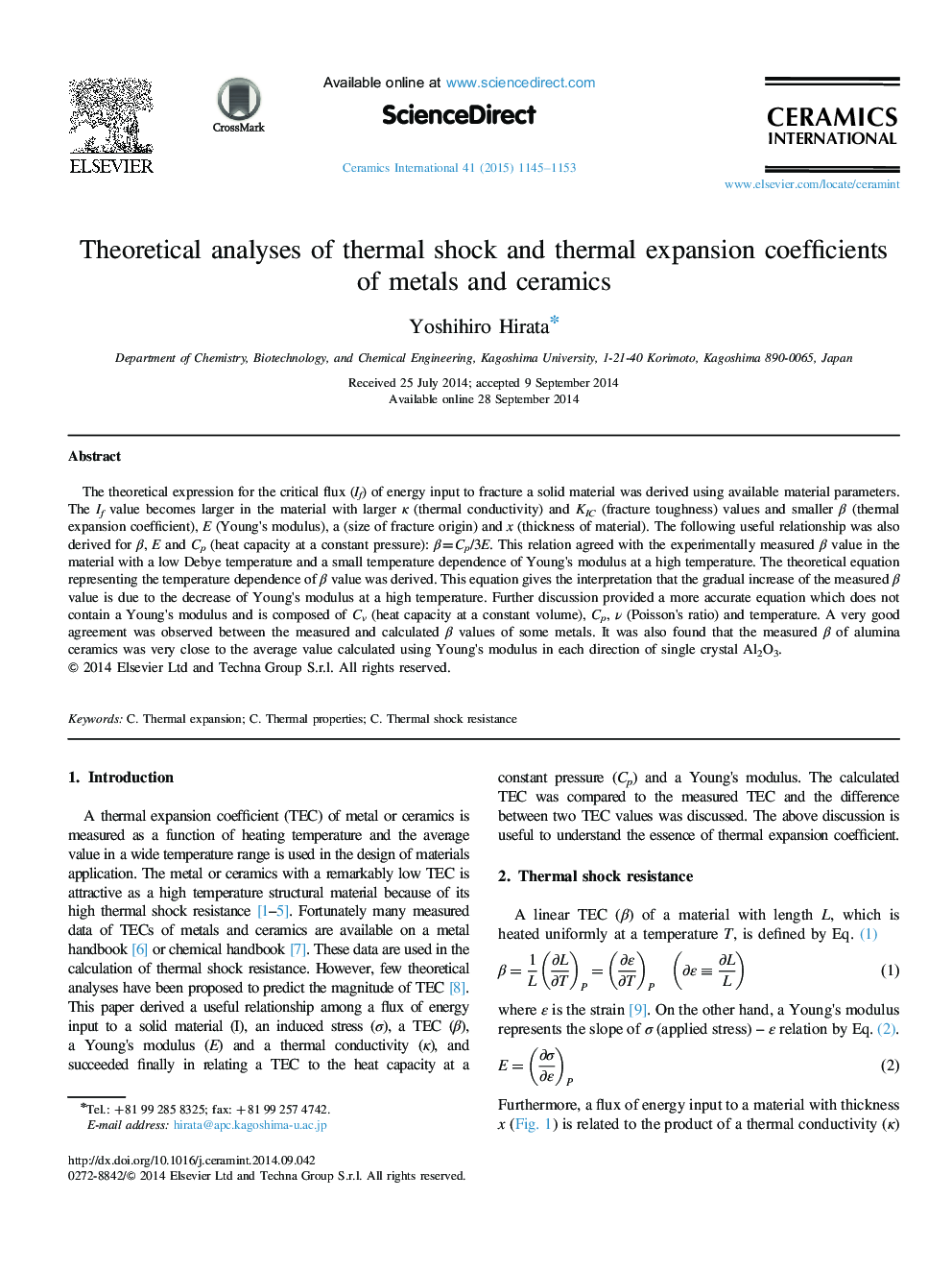| Article ID | Journal | Published Year | Pages | File Type |
|---|---|---|---|---|
| 1460811 | Ceramics International | 2015 | 9 Pages |
The theoretical expression for the critical flux (If) of energy input to fracture a solid material was derived using available material parameters. The If value becomes larger in the material with larger κ (thermal conductivity) and KIC (fracture toughness) values and smaller β (thermal expansion coefficient), E (Young׳s modulus), a (size of fracture origin) and x (thickness of material). The following useful relationship was also derived for β, E and Cp (heat capacity at a constant pressure): β=Cp/3E. This relation agreed with the experimentally measured β value in the material with a low Debye temperature and a small temperature dependence of Young׳s modulus at a high temperature. The theoretical equation representing the temperature dependence of β value was derived. This equation gives the interpretation that the gradual increase of the measured β value is due to the decrease of Young׳s modulus at a high temperature. Further discussion provided a more accurate equation which does not contain a Young׳s modulus and is composed of Cv (heat capacity at a constant volume), Cp, ν (Poisson׳s ratio) and temperature. A very good agreement was observed between the measured and calculated β values of some metals. It was also found that the measured β of alumina ceramics was very close to the average value calculated using Young׳s modulus in each direction of single crystal Al2O3.
